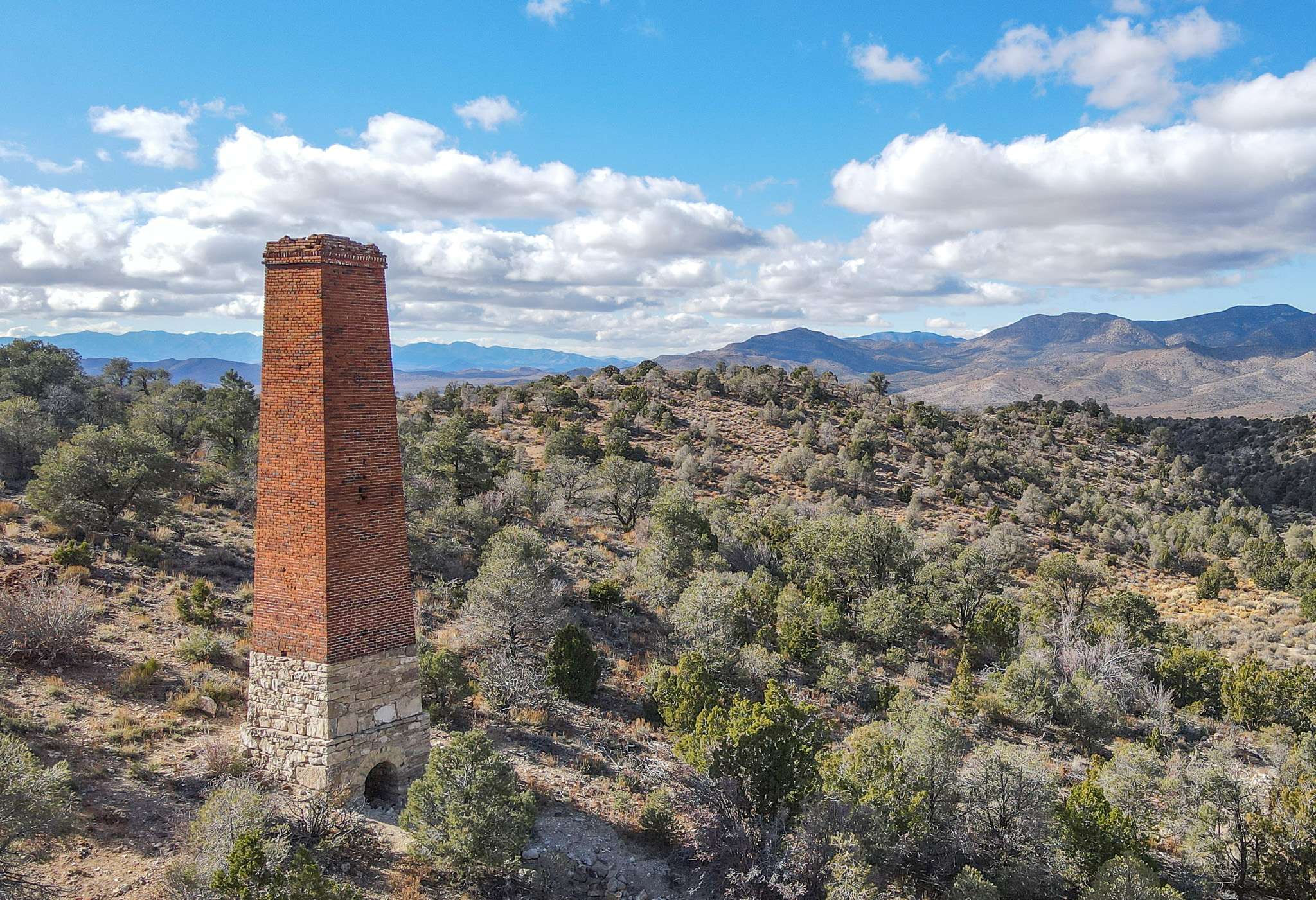
Located outside of Rachel, Nevada, is the old mining town of Crescent City. Little is known about the short-lived mill and surrounding mines, List and Rosey. The 150-year-old smelter stack, rock and log cabin make it a spectacular ghost town to visit.
Crescent Mill
In 1865, prospectors from Panacker City, Utah, discovered ore containing silver in the Pahranagat District. They briefly abandoned the district, but by 1866, between 100 and 200 men had returned. The Crescent Silver Mining Company constructed a 5-stamp mill to process local ore. The mill was situated on Crescent Spring, as mills require water processing. The mill closed after operating for only 10 days due to a lack of financial resources.
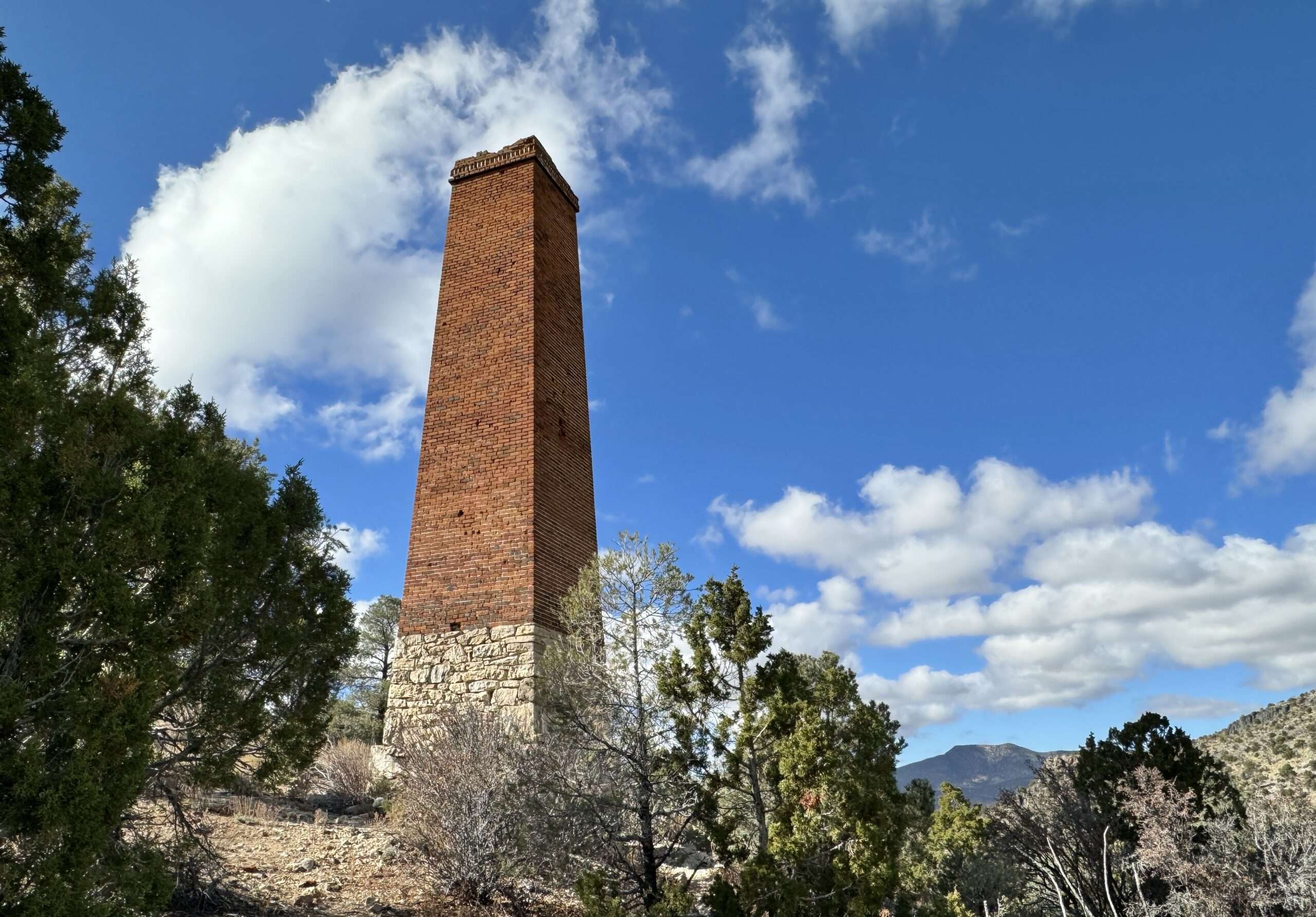
The Alameda Silver Mining Company assumed mill operations in 1868. With new funding, they expanded to 10 stamps and four furnaces driven by a 22-horsepower engine. The mill operated from 1869 to 1871.
In 1870, it was estimated that developers spent $1 million developing the Crescent district, with a profit of only $20,000.
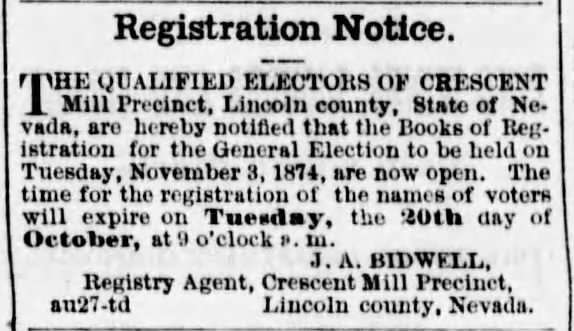
Sat, Sep 05, 1874 · Page 3
A small settlement of Crescent City developed. In 1872 and 1874, the Crescent district had enough population to warrant an election district.
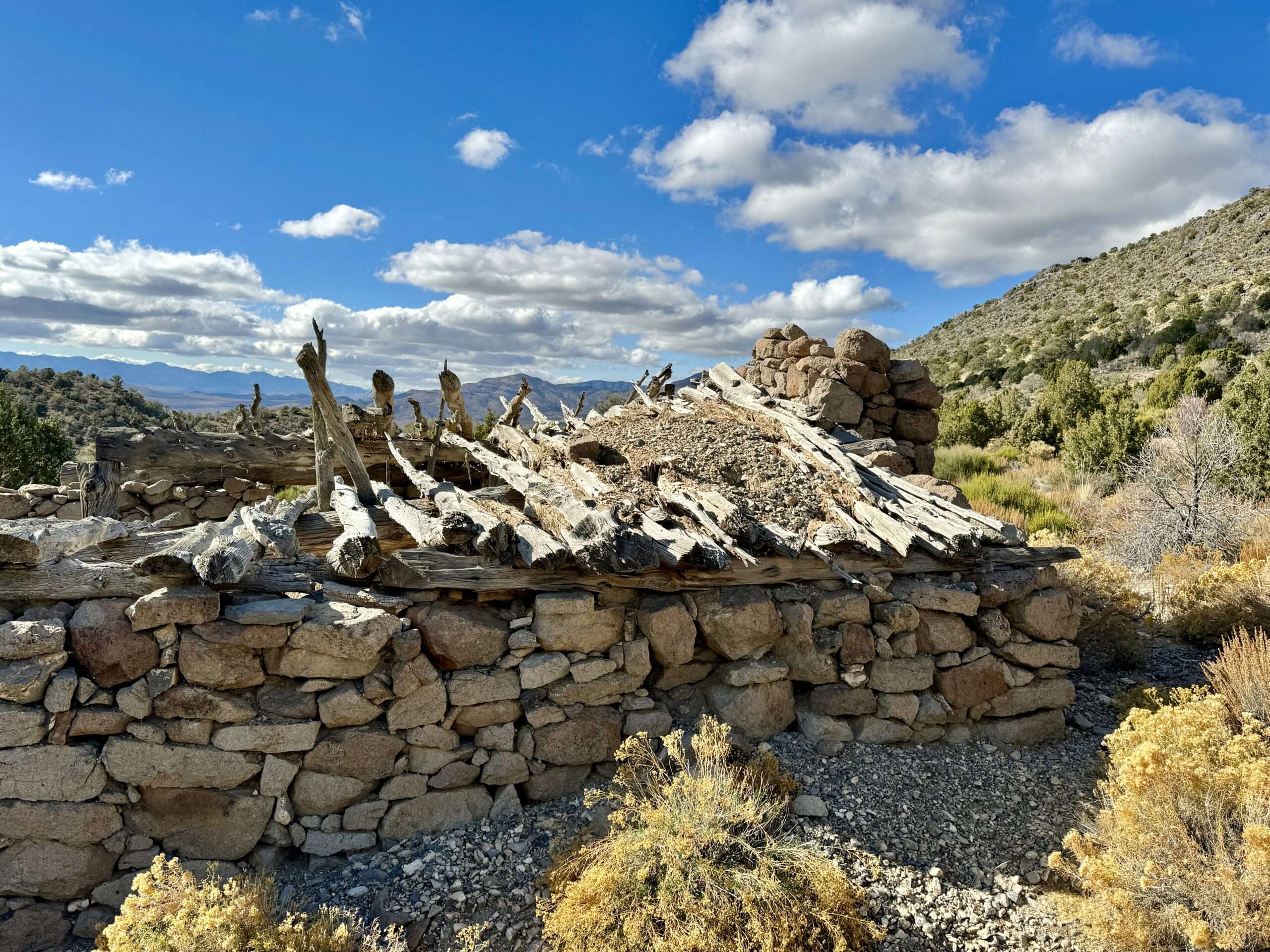
The mill resumed operations in 1873 under Superintendent Mr. Bidwell. The Crescent Mill ran continuously and produced 2,400 ounces of silver. Newspapers reported the bullion would “make an important item in the silver exploration of Southern Nevada.”
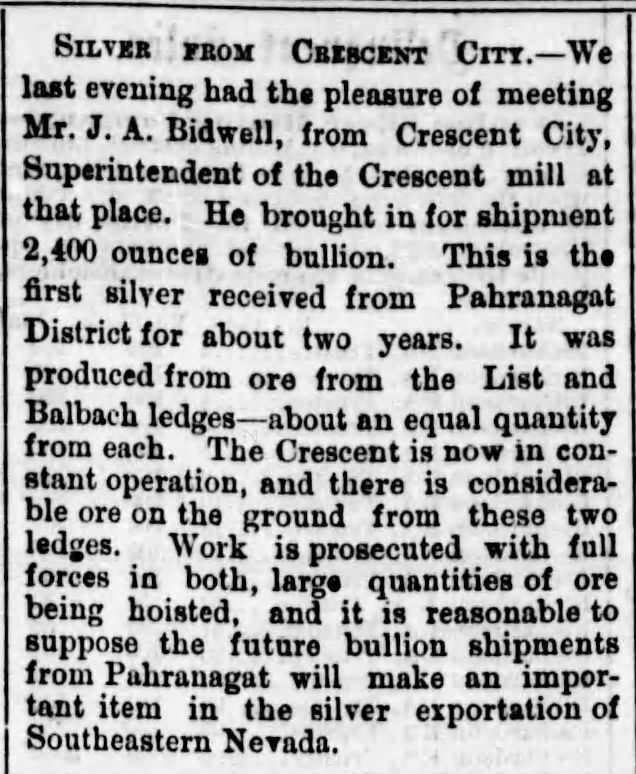
Wed, Feb 05, 1873 · Page 3
Following this short run, the mill was relocated to Tempiute Mine. By 1881, only 10 miners worked in the district.
Crescent City Ruins
The most prominent ruin of Crescent City is the mill smelter stack. A flue connects the stack to the mill foundations below.
Mill Smelter Stack
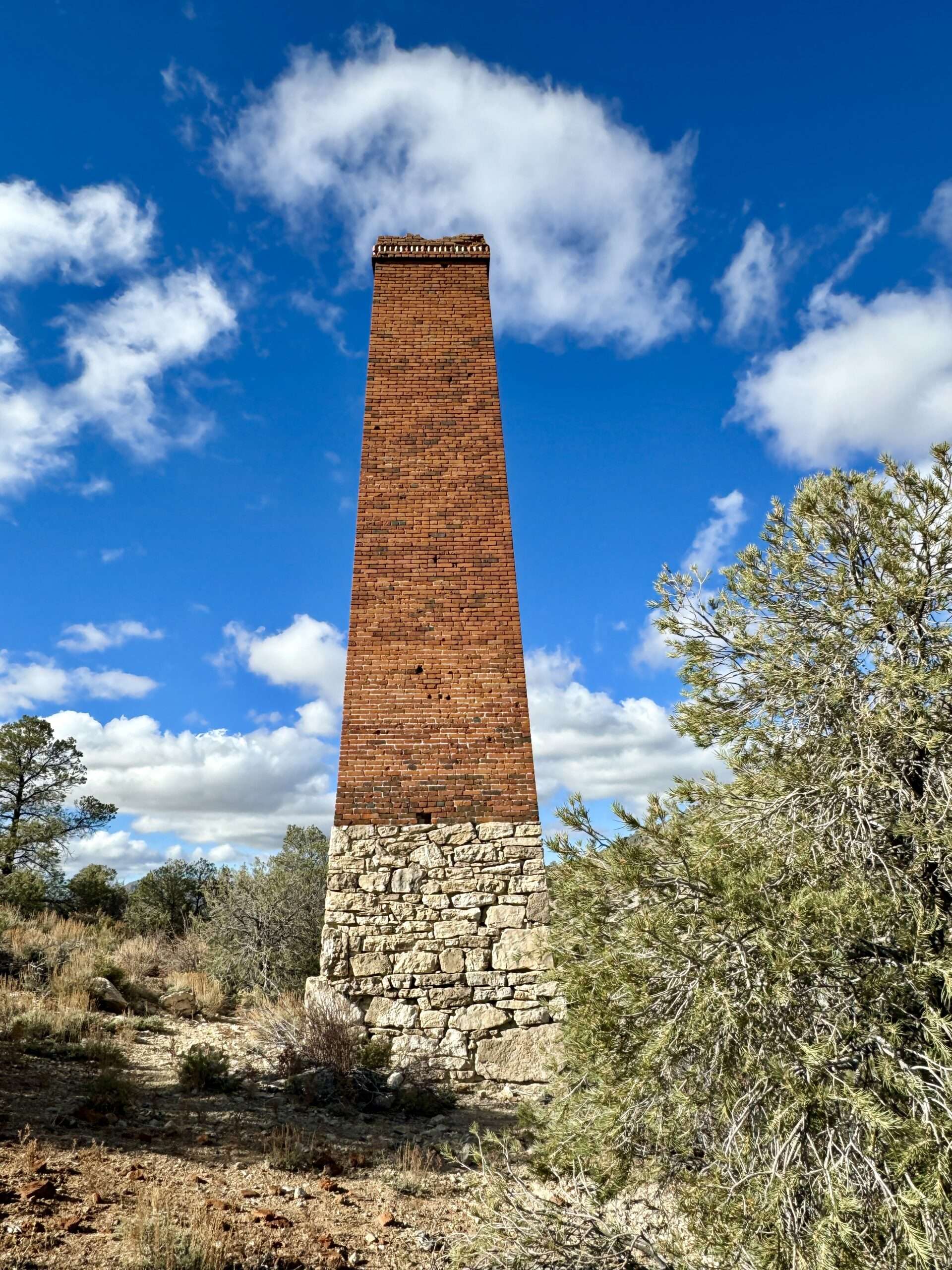
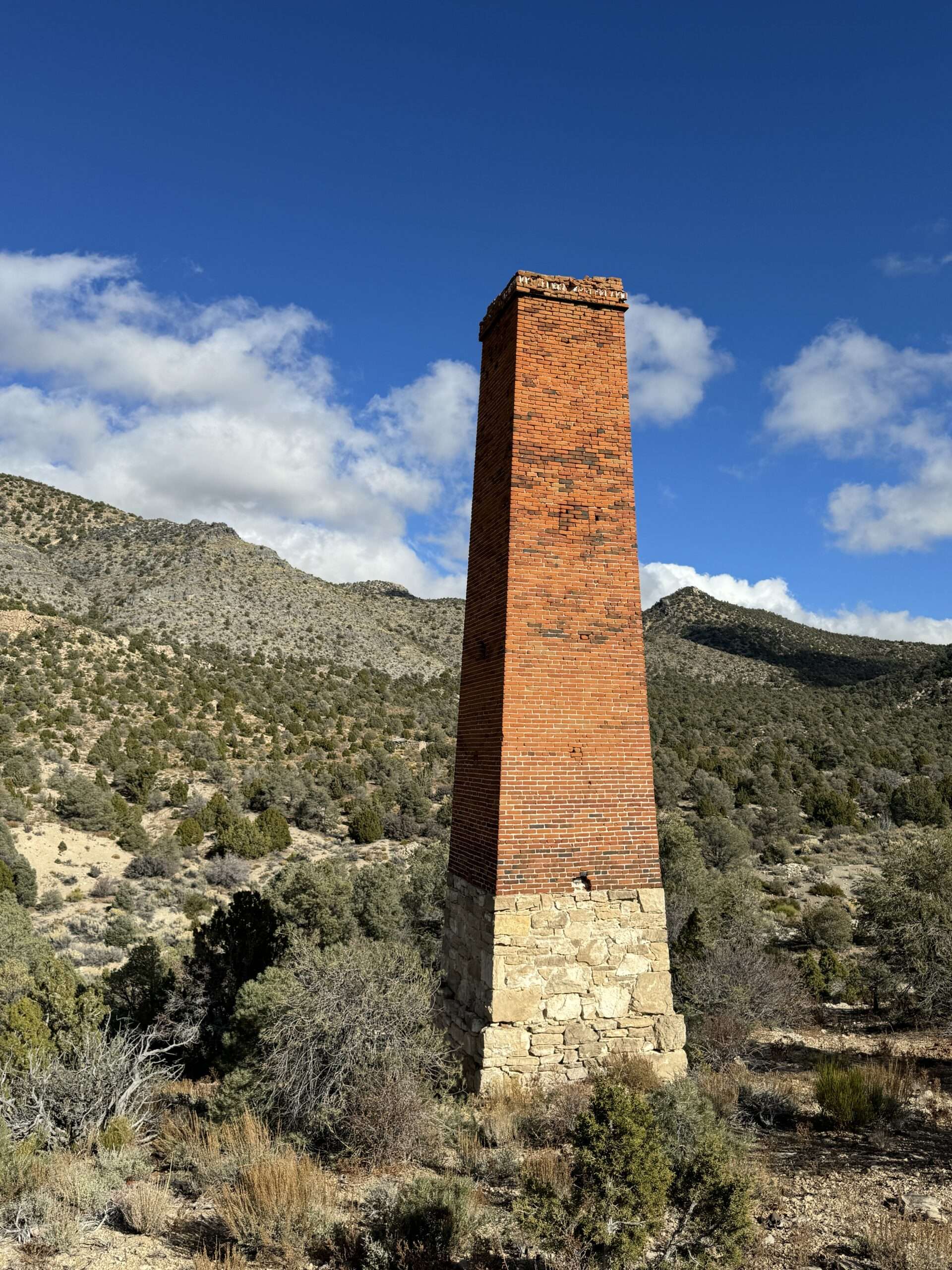
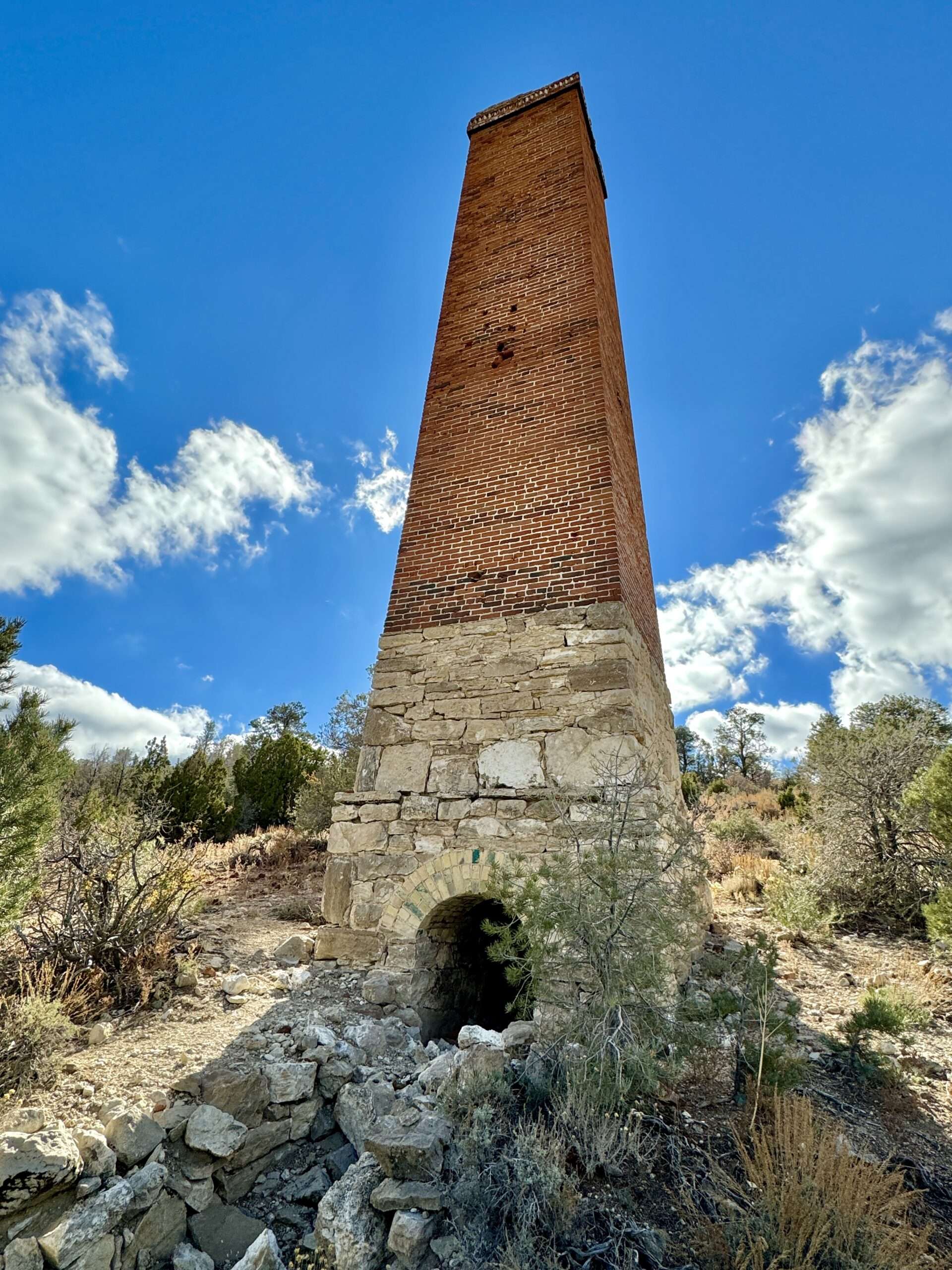
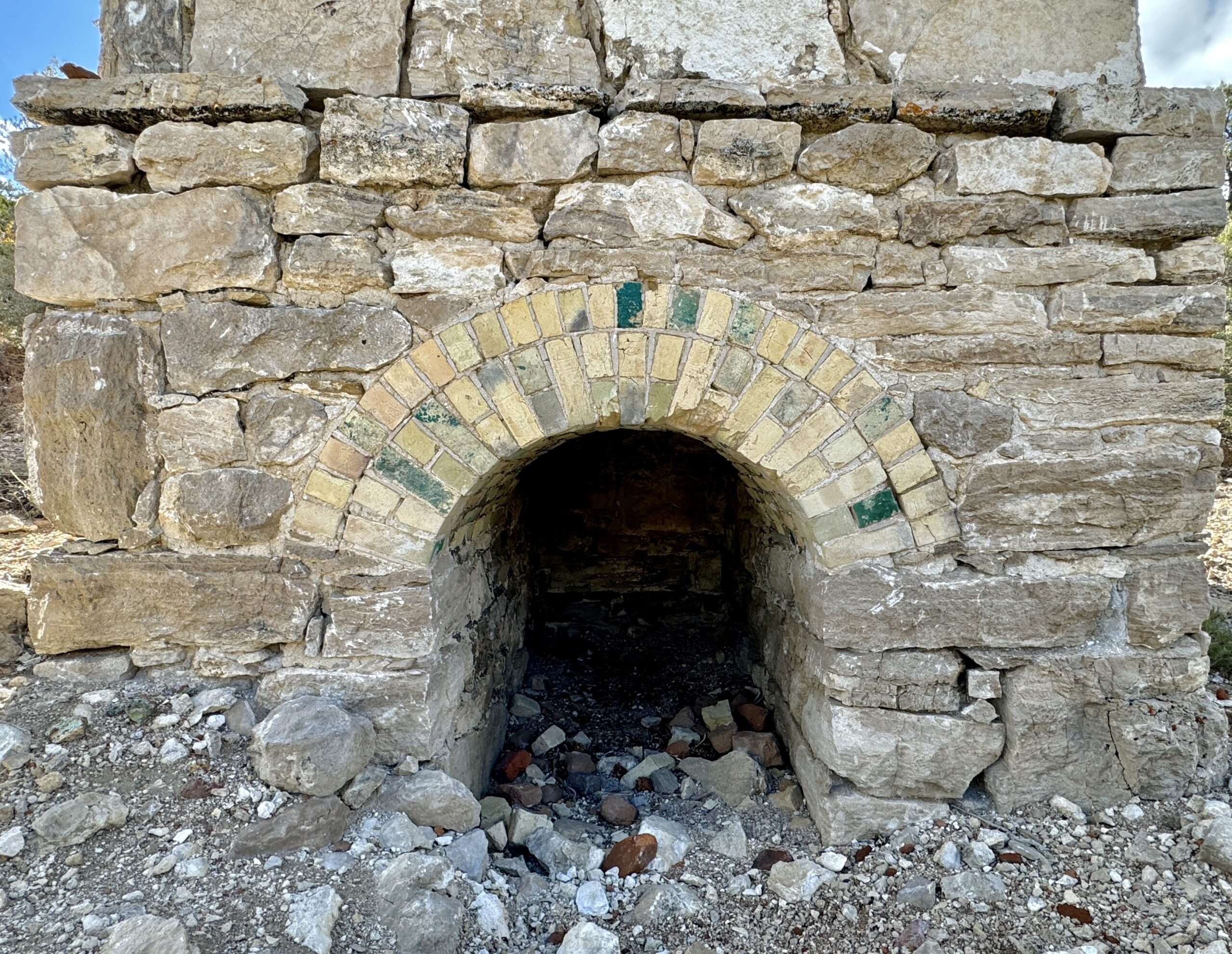
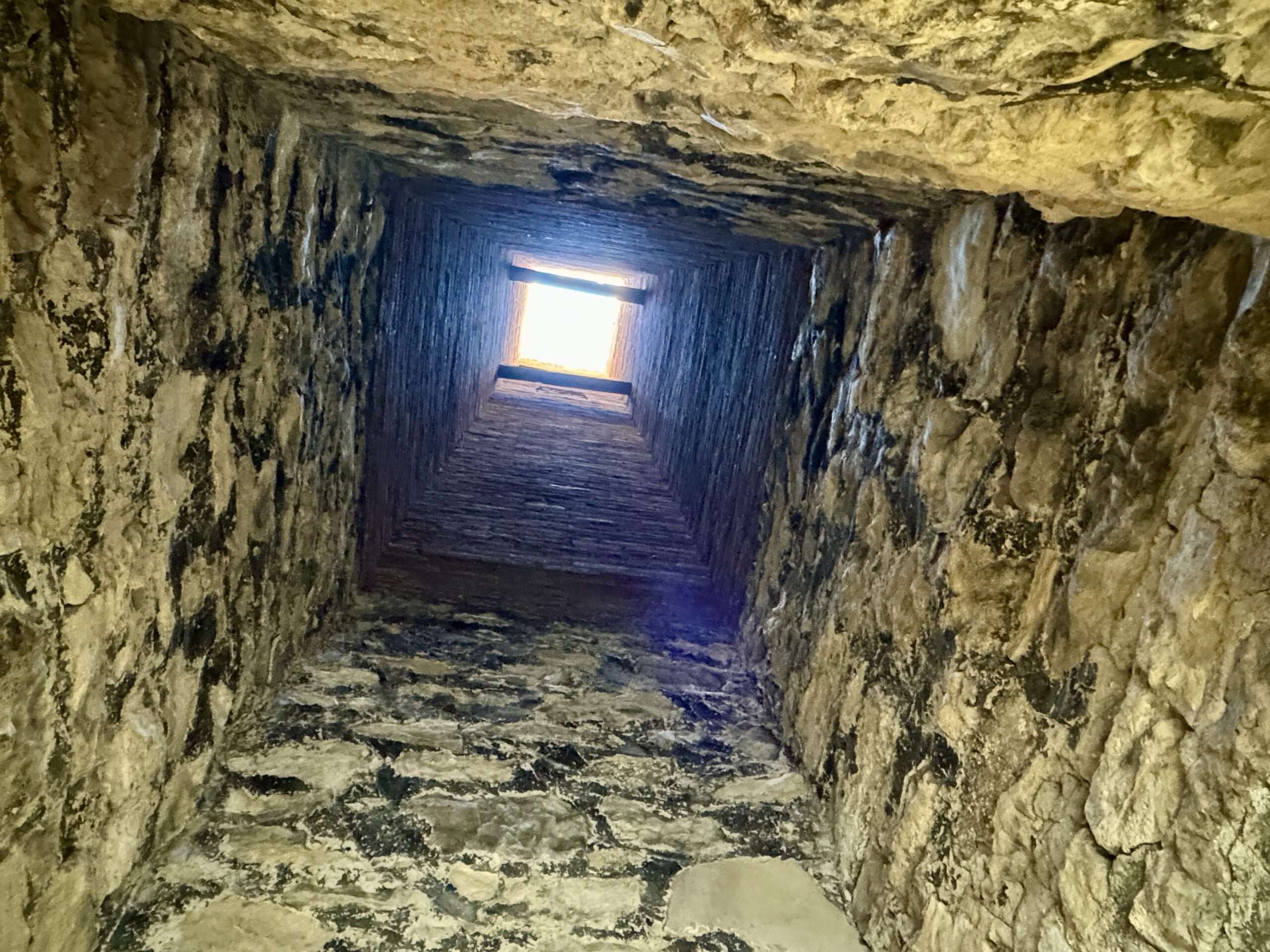
MIll Flue
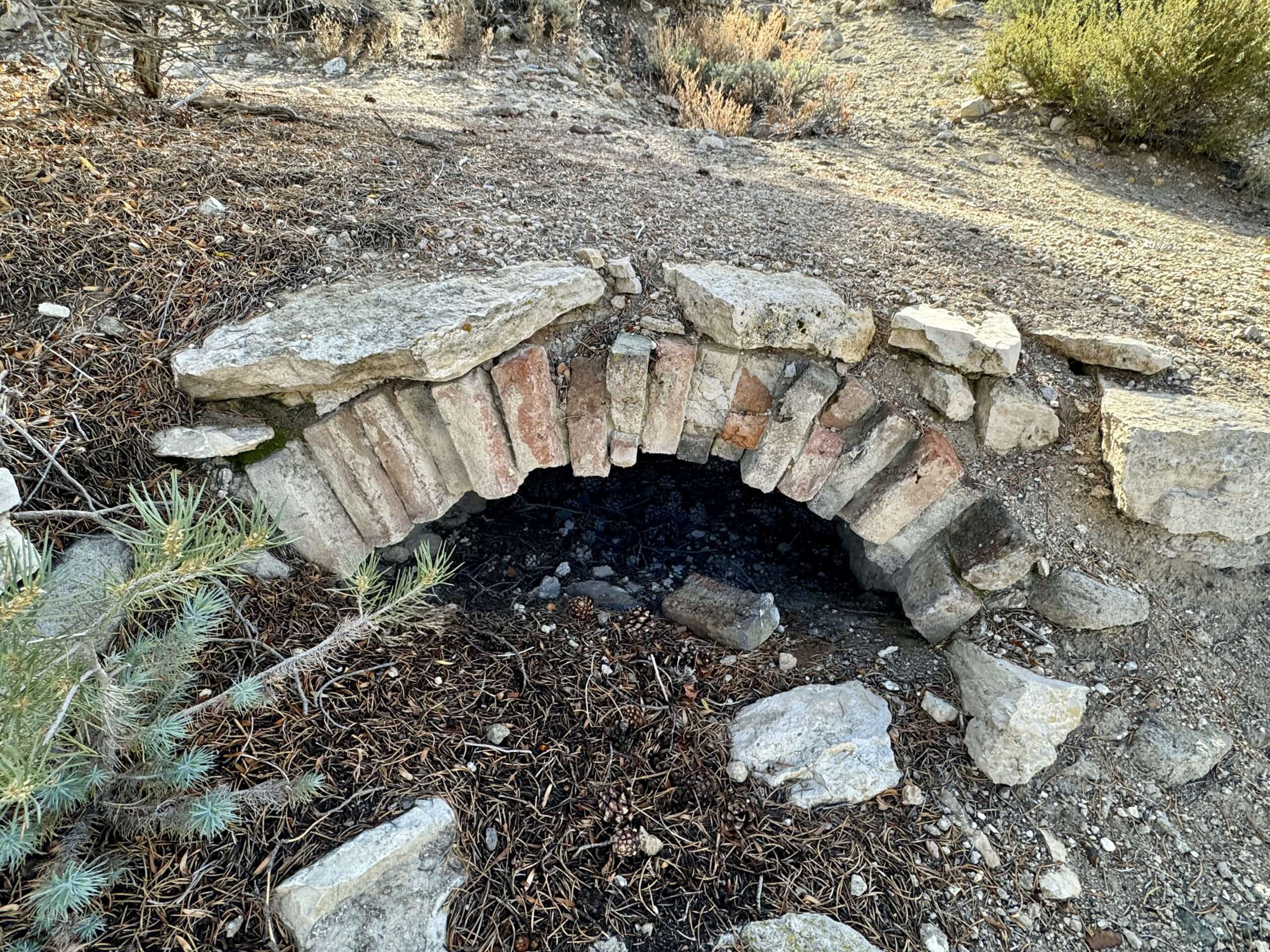

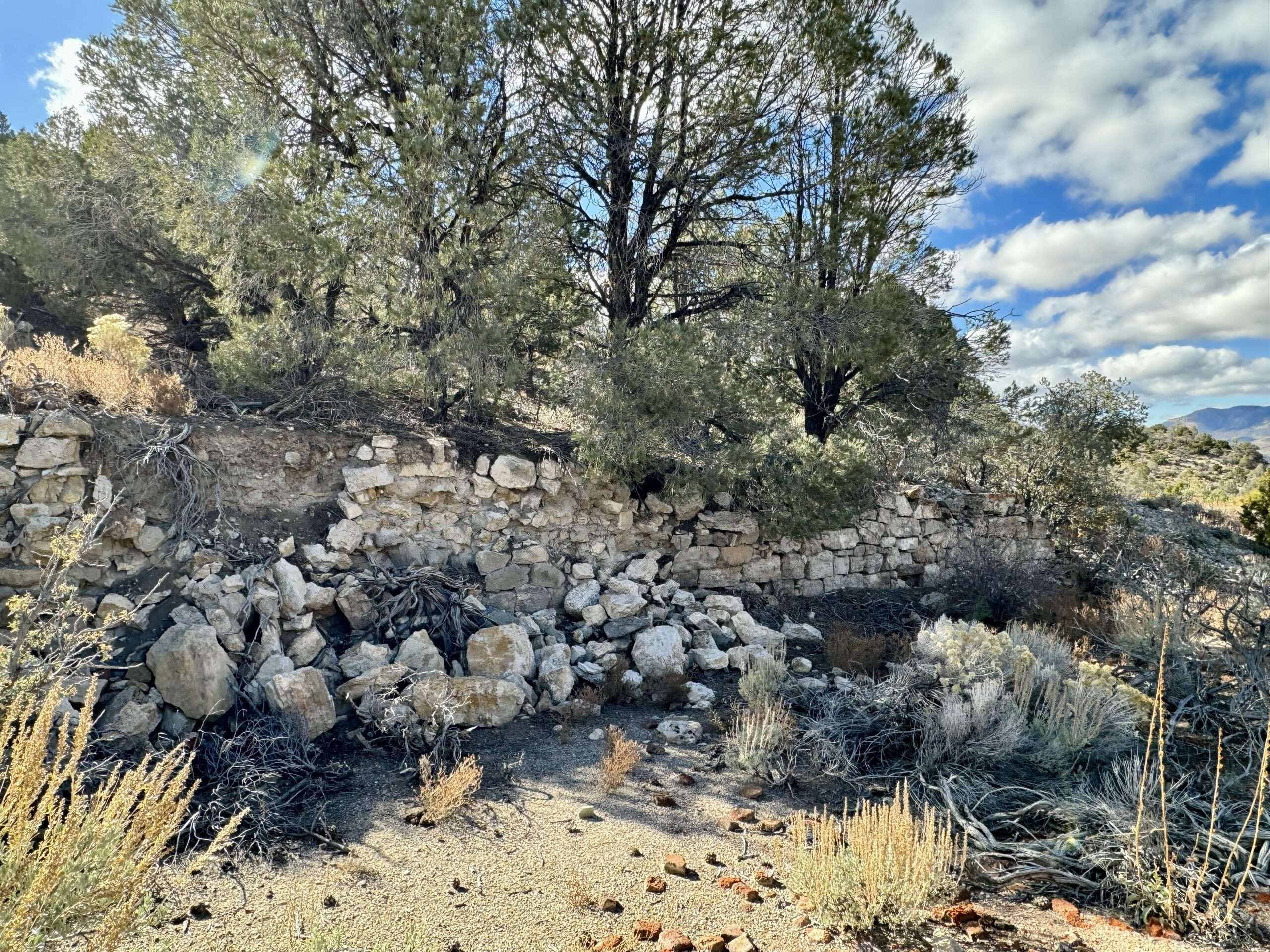
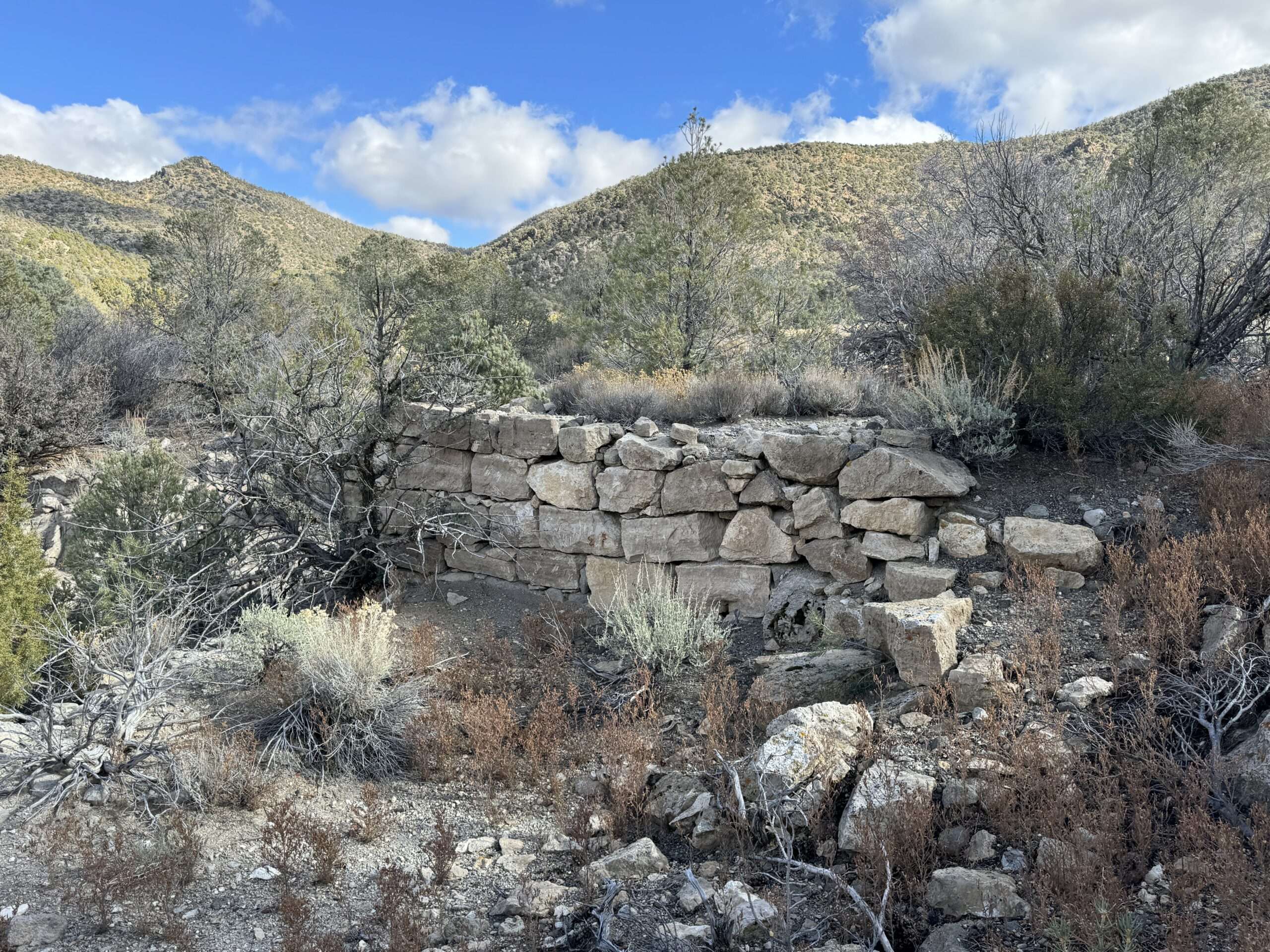
Cabin Ruins
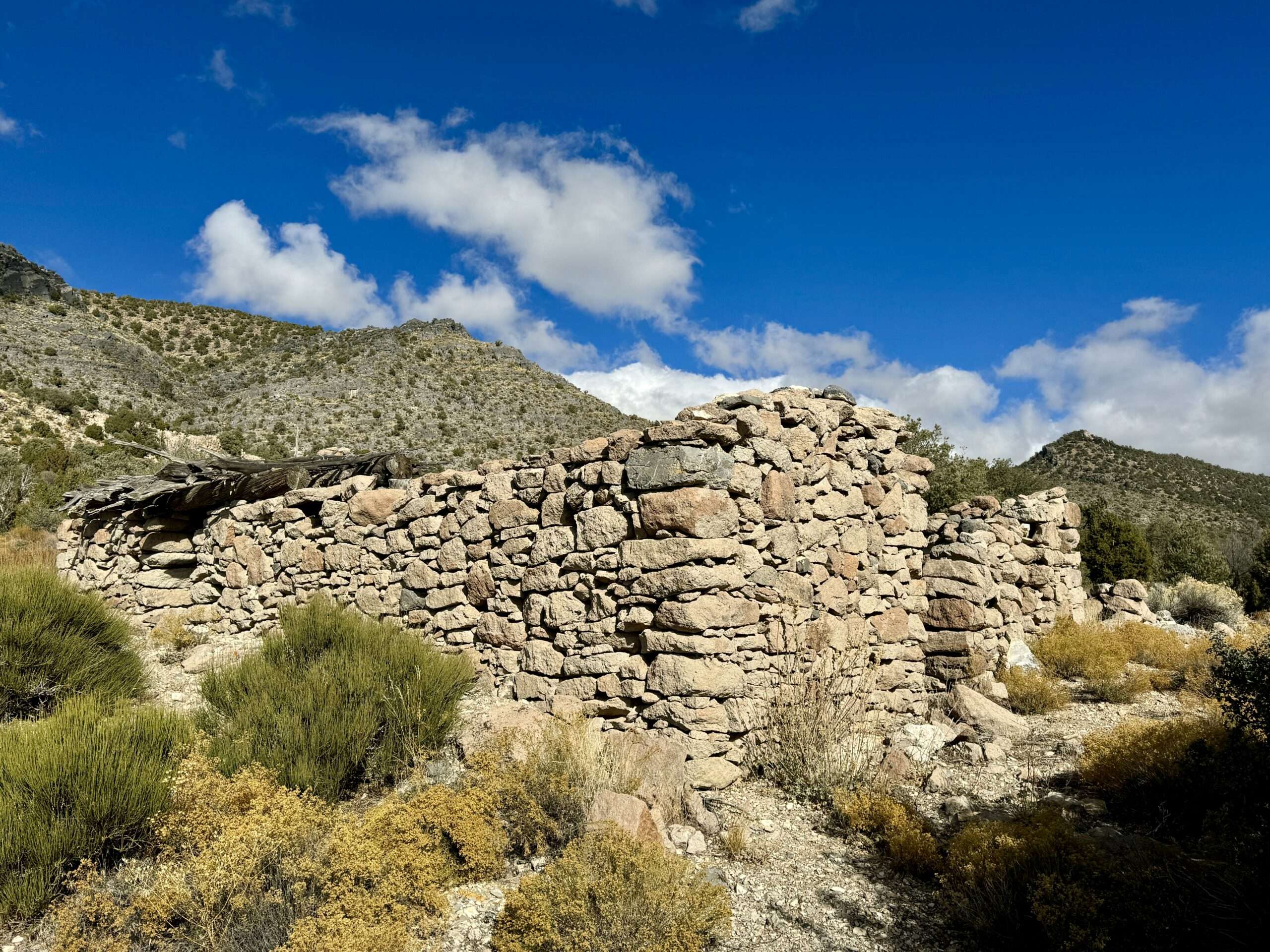
One stone cabin with a thatched roof sits across the creek from the mill.
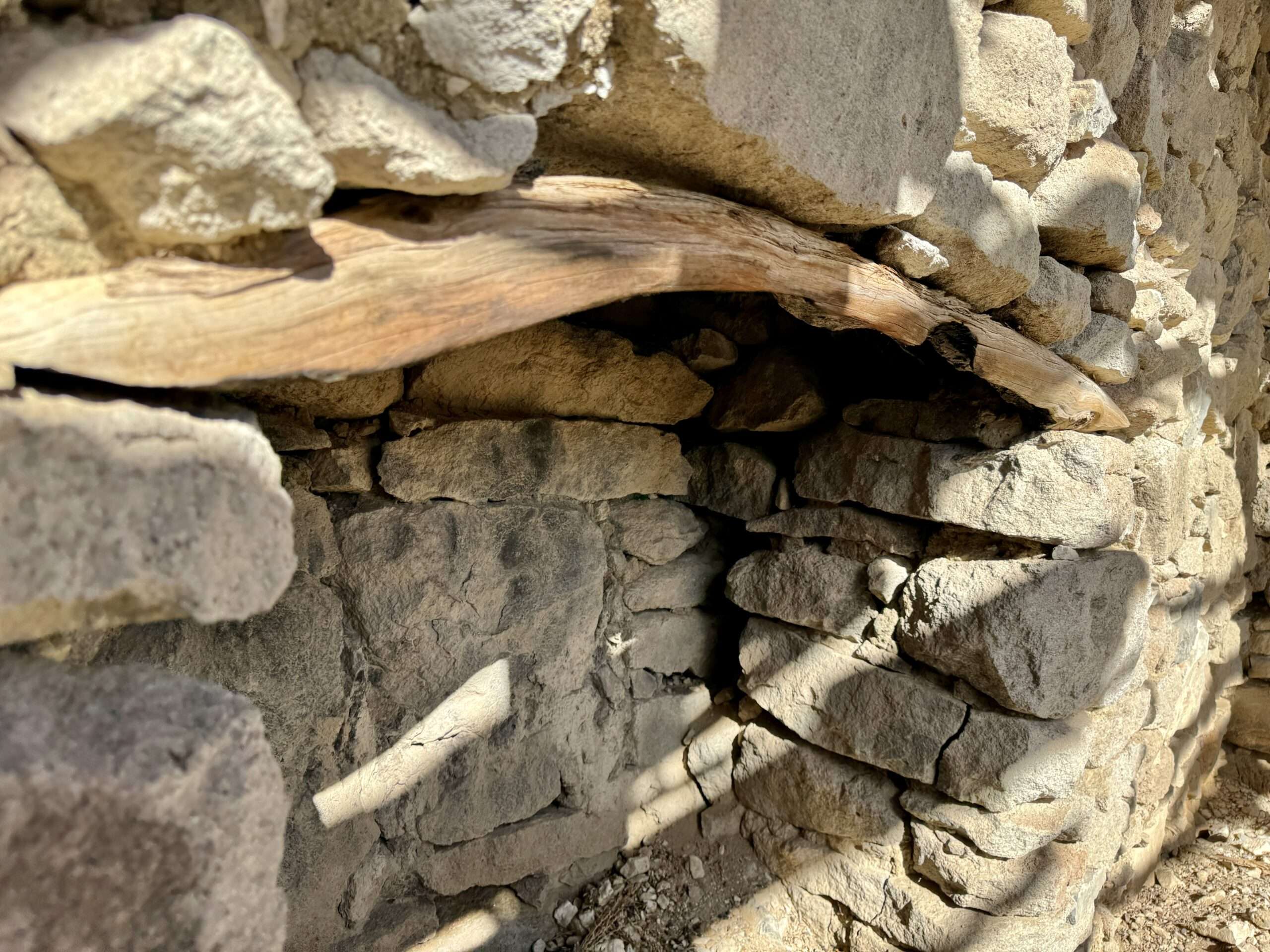
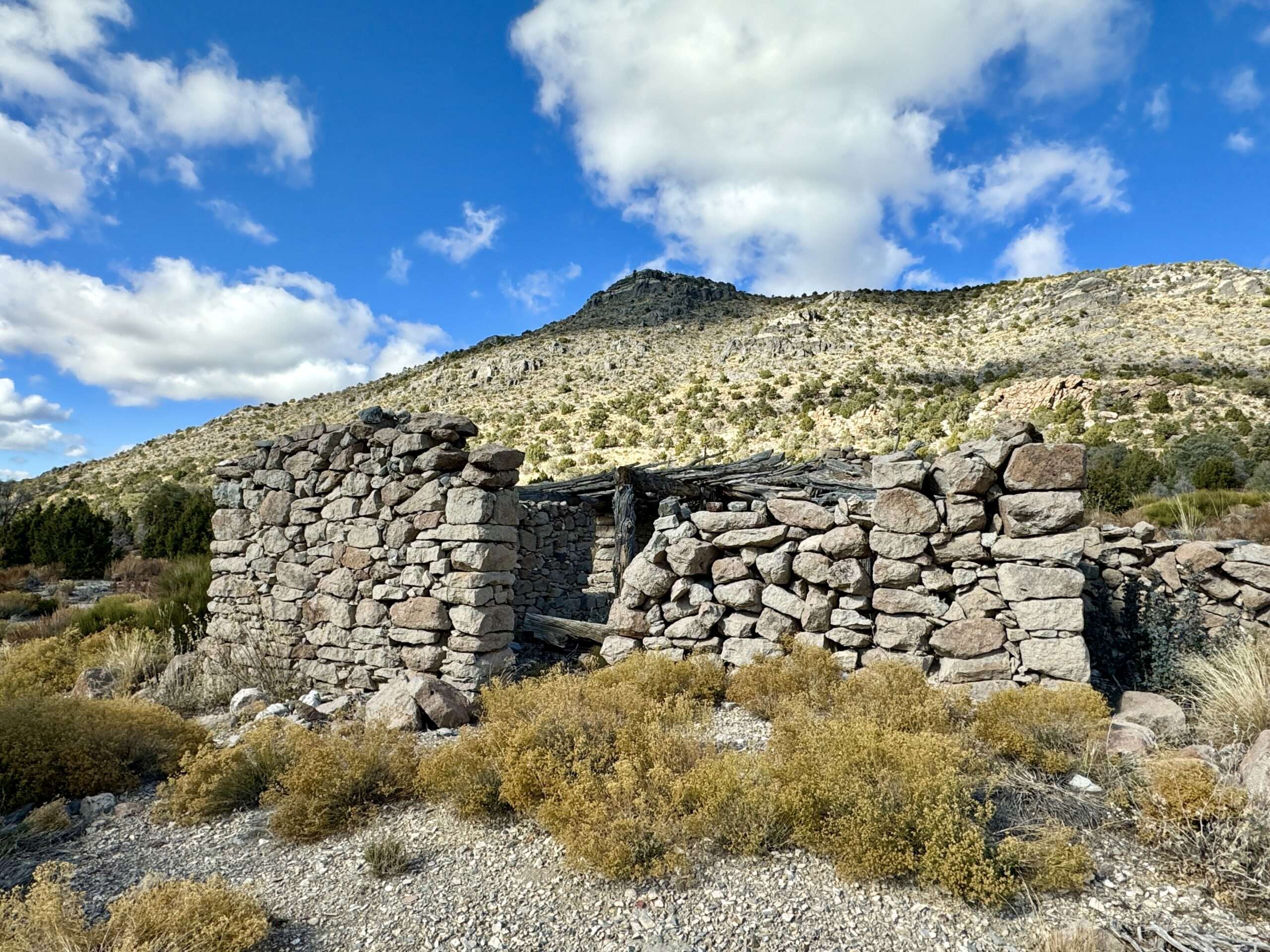

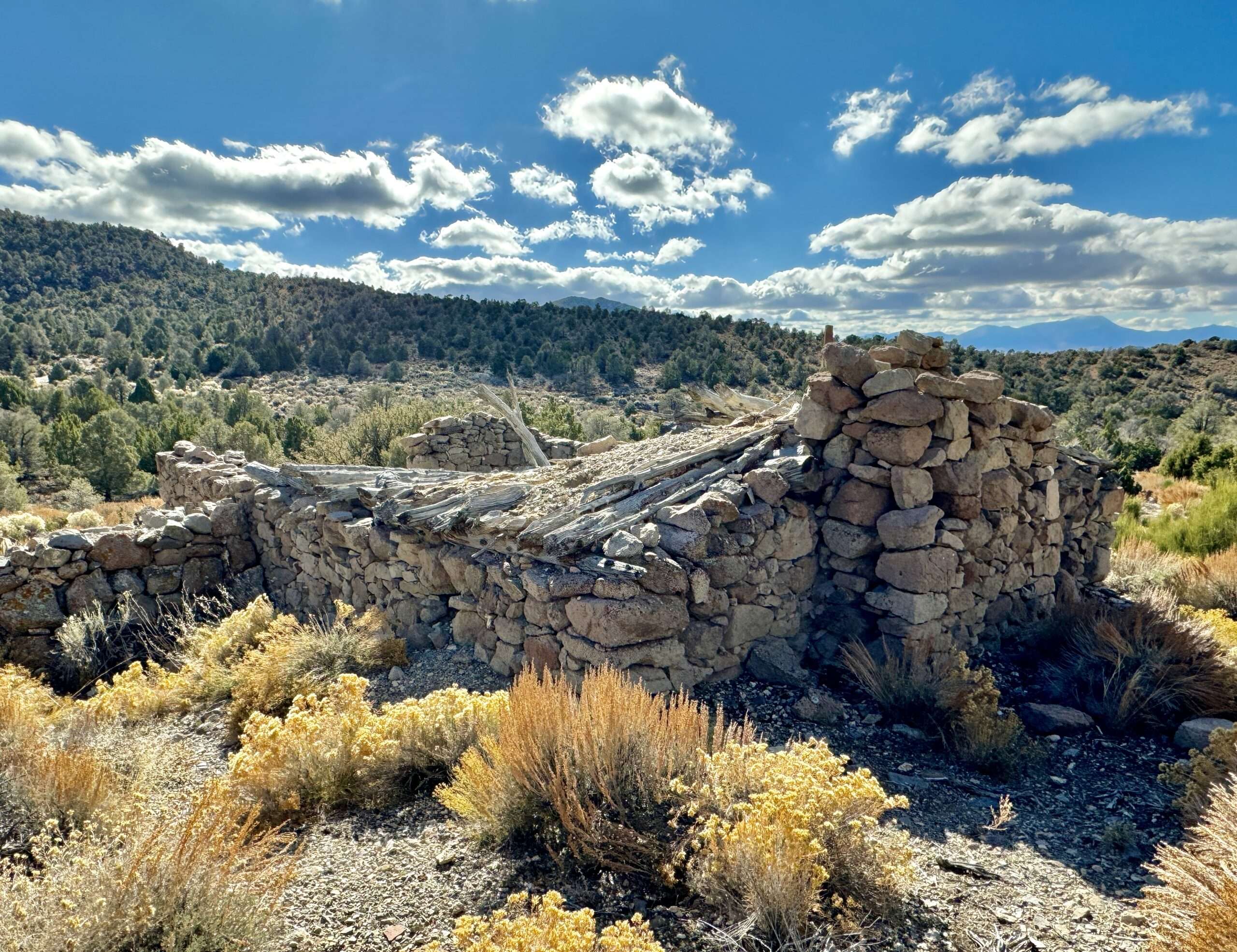
List & Rosey Mines
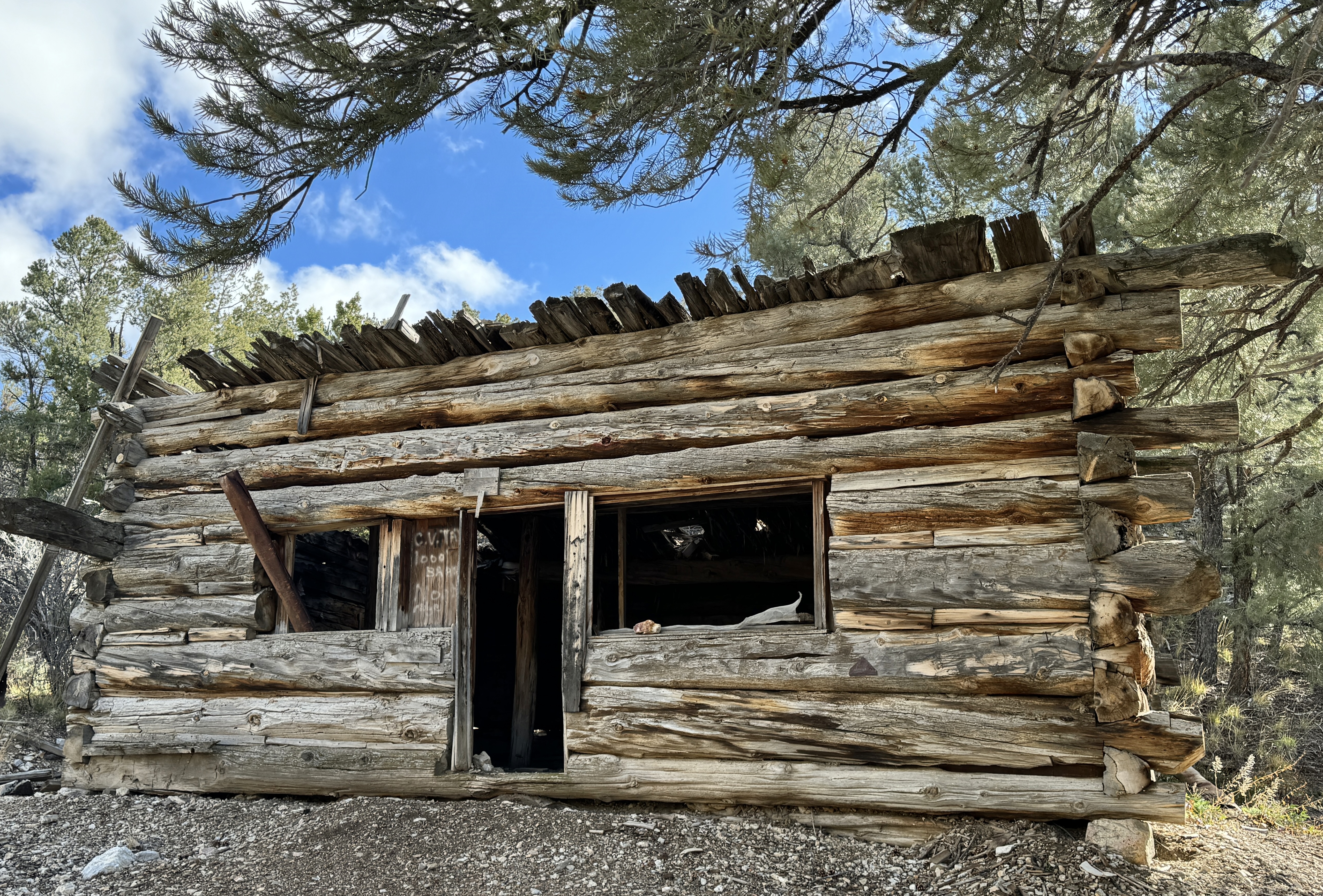
The List Mine was one of the first mines in the district, and the Crescent and Alameda Mining Company worked it. Between 1867 and 1868, its silver ore was valued at $80 a ton. That year the mine produced 50 tons valued at $1920.
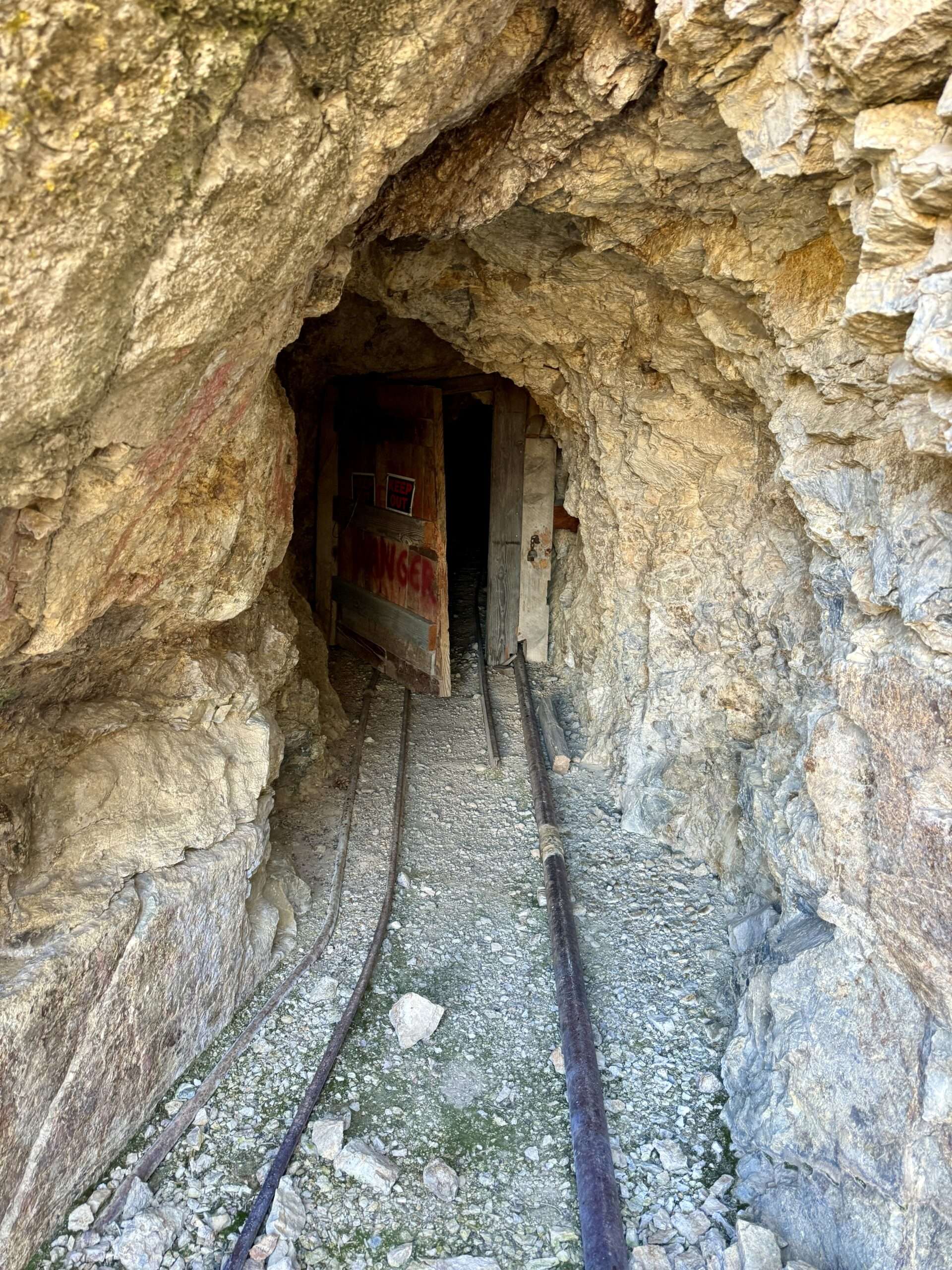
Rosario “Rosie” Arcuri began re-working the mine in late 1925. He built a small smelter by Crystal Springs with plans for a mill on site. The mine has been known by multiple names, including Rosie, Rosey, Tate Property and Moonshiner Claim.
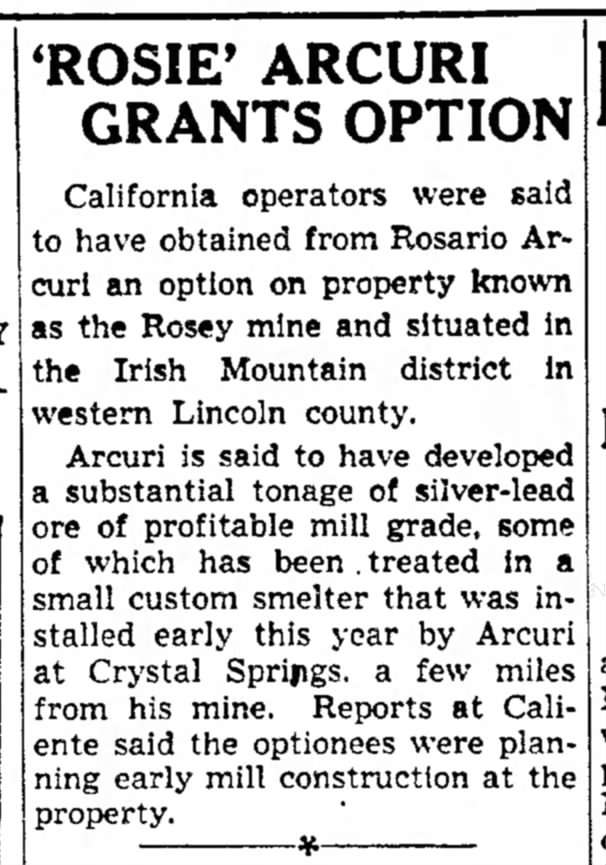
Reno, Nevada · Monday, August 12, 1940

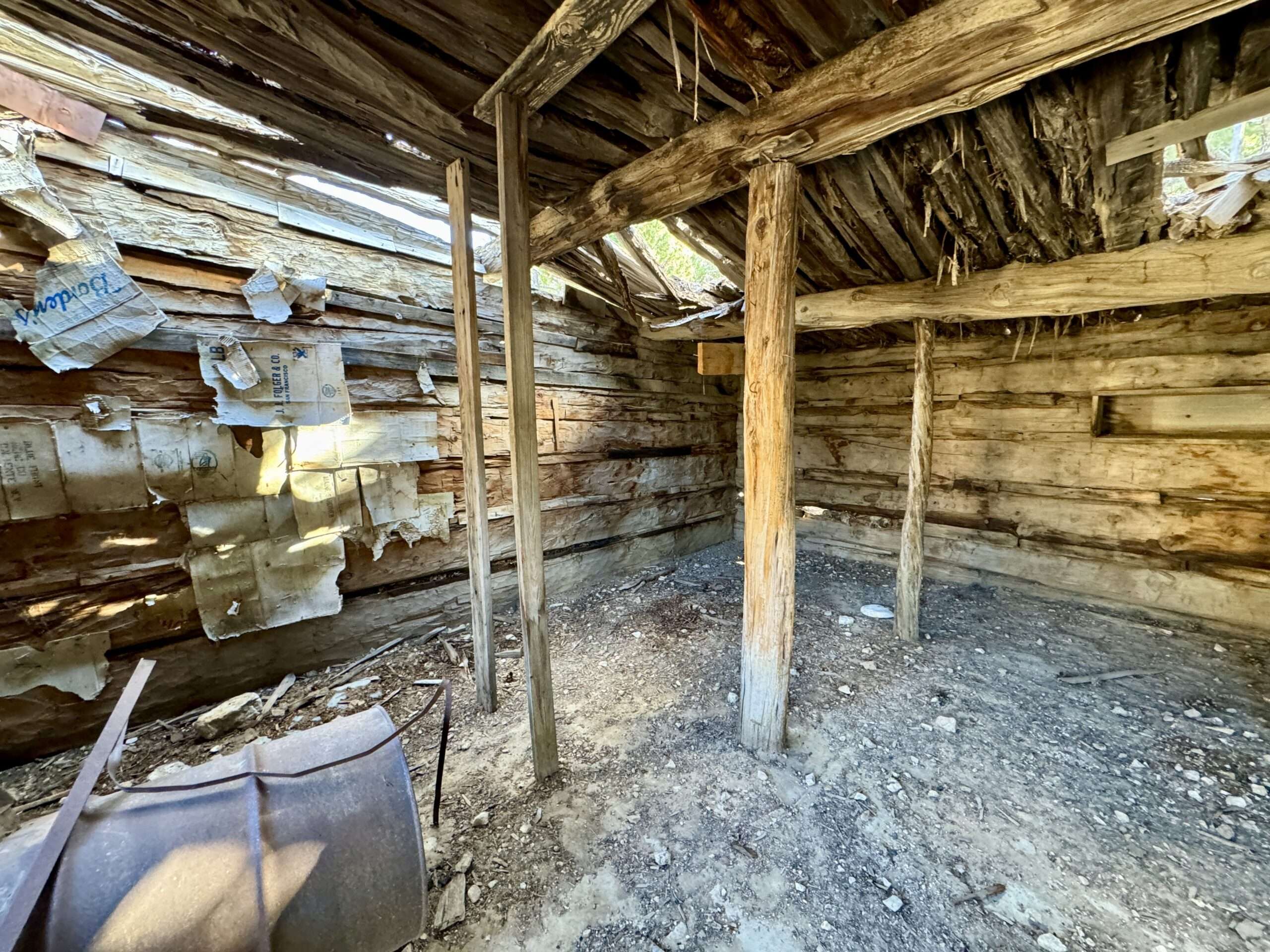

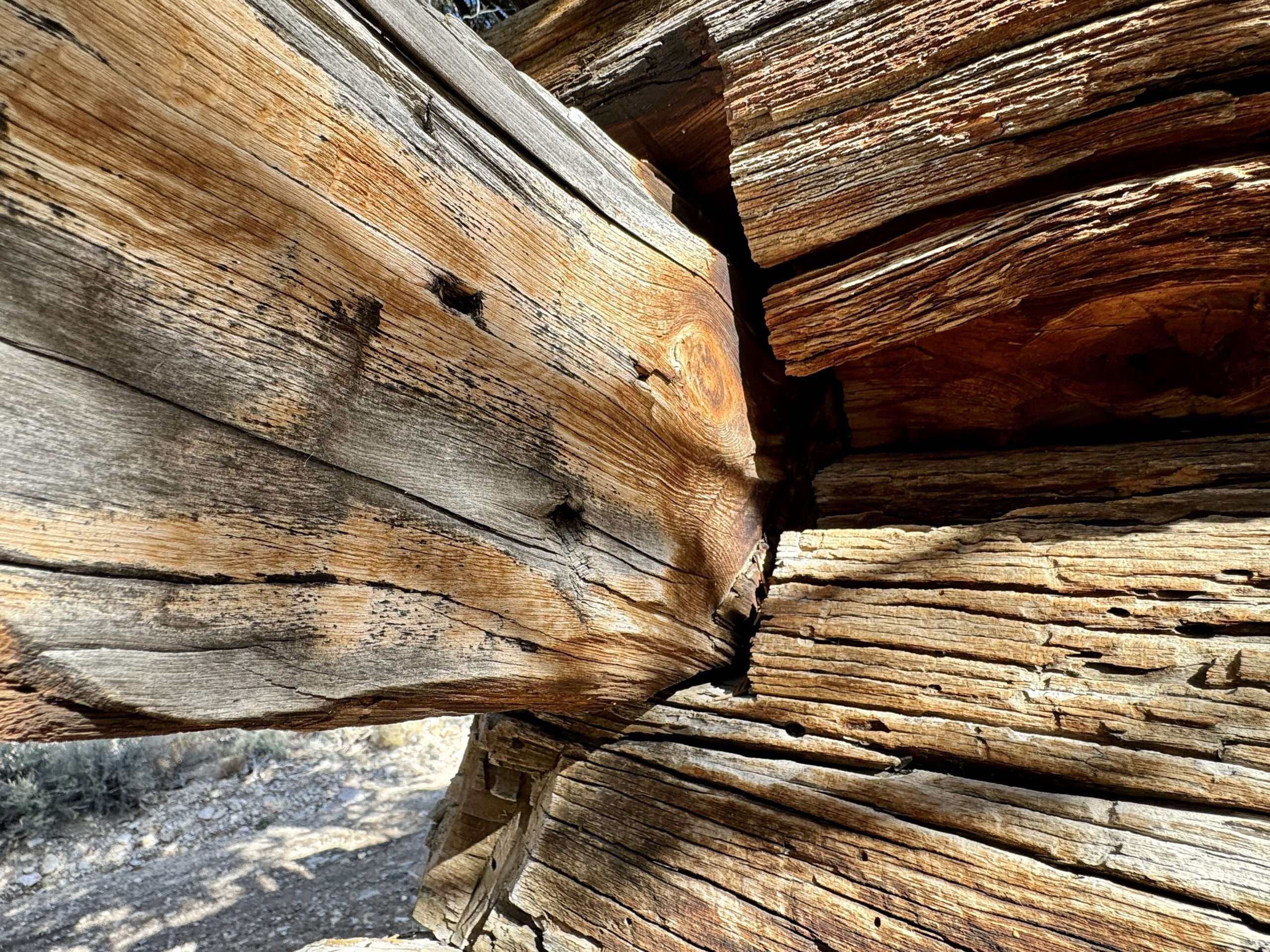
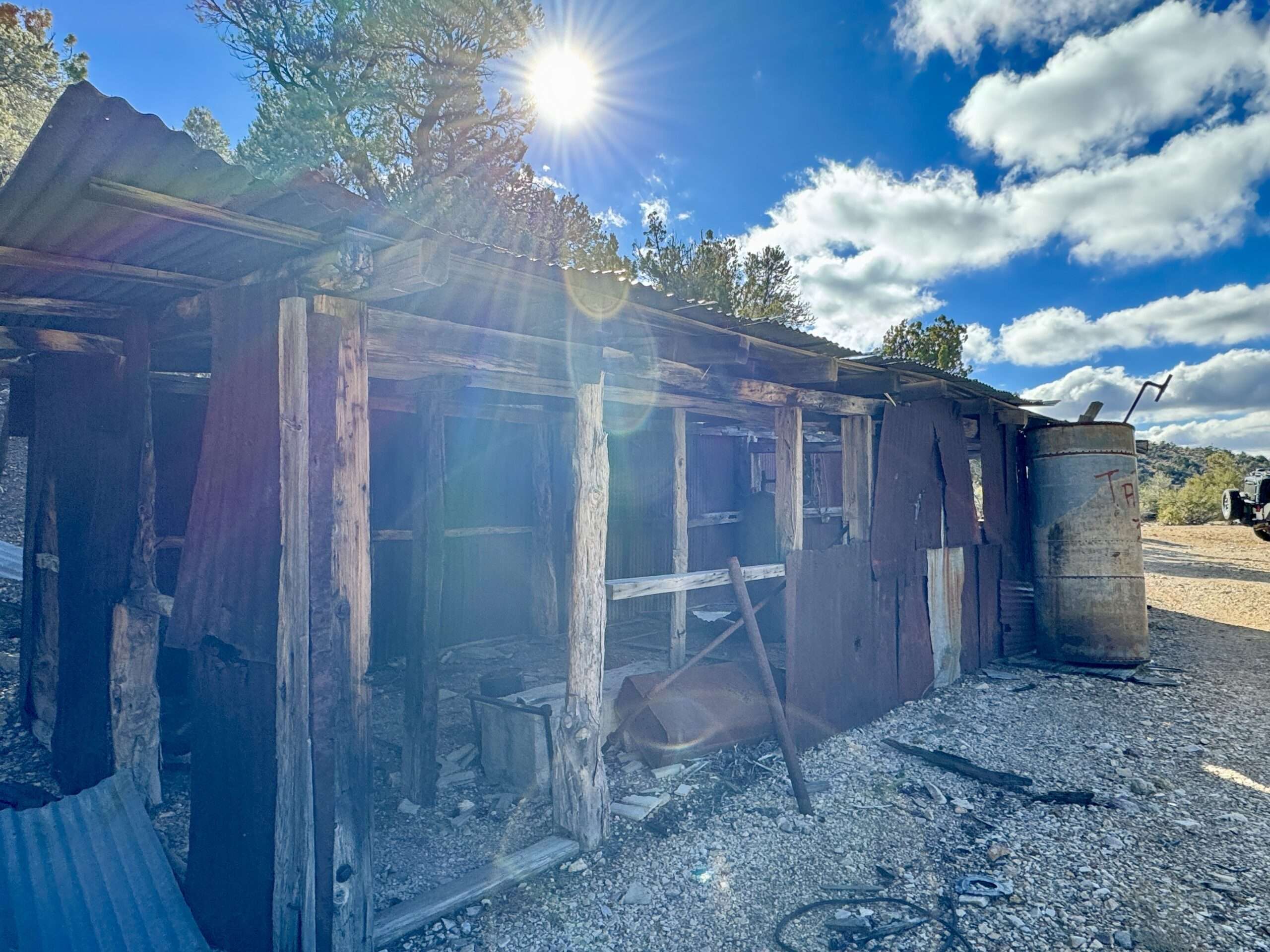
WANT MORE GHOST TOWNS?
For information on more than five hundred ghost towns in Nevada & California, visit the Nevada Ghost Towns Map or a list of Nevada ghost towns.
Learn about how to visit ghost towns safely.

References
- BLM Informational sign
- Nevada Bureau of Mines and Geology. Mineral resources of Timpahute Range, 1991. Pages 12, 17.
- Nevada Expeditions: Crescent City
- Nevadans for Cultural Preservation
- Rachael-Nevada: Crescent City
Jim Wetzel says
Impressive stack in the “middle of nowhere”! How was the access?
Thanks for the research telling the human side of long-ago forgotten activity.
Jim
(FOST volunteer)
Tami says
Thanks, I love what I am able to do with history.
Access wasn’t bad. Winter can be difficult; we tried to come from the backside and got stopped by too much snow.